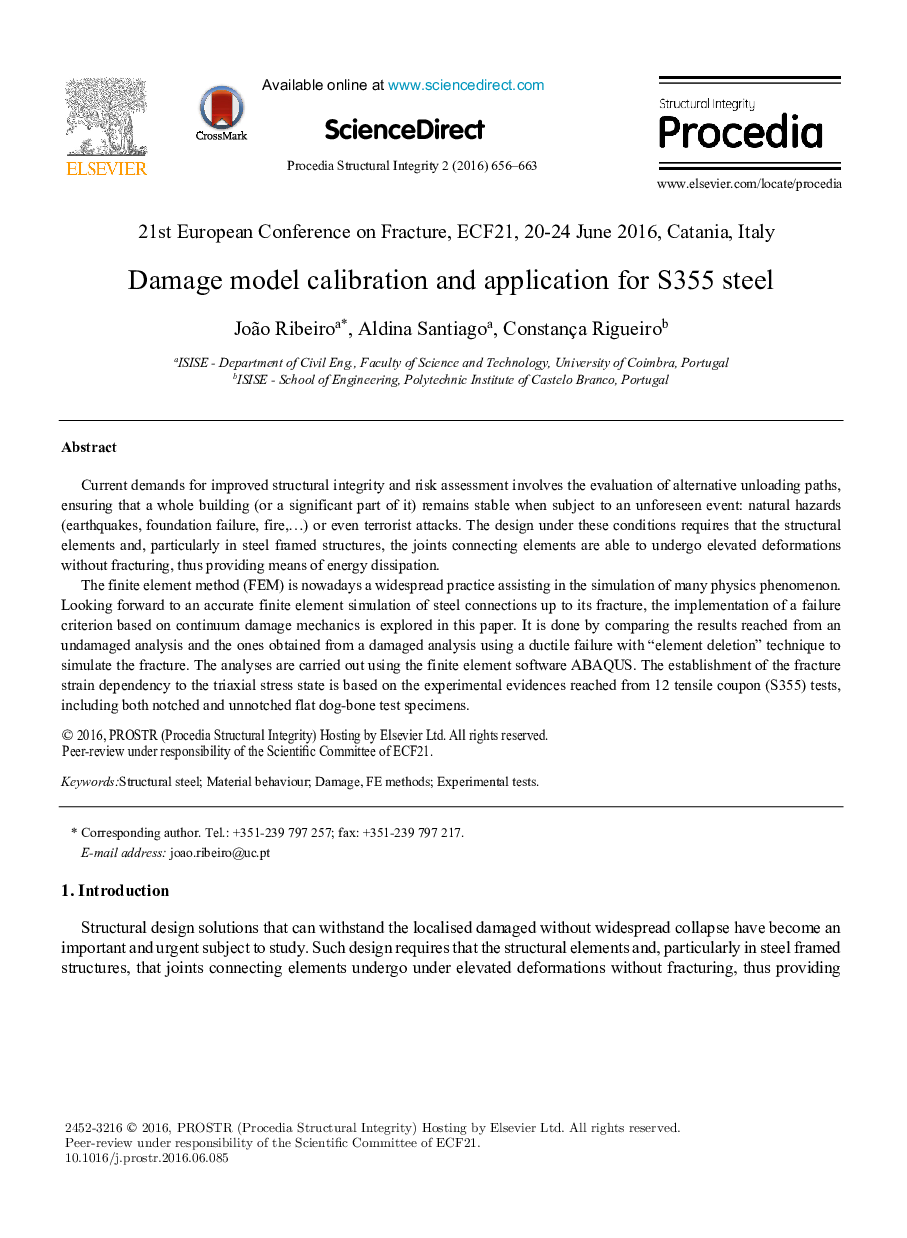| Article ID | Journal | Published Year | Pages | File Type |
|---|---|---|---|---|
| 1558726 | Procedia Structural Integrity | 2016 | 8 Pages |
Current demands for improved structural integrity and risk assessment involves the evaluation of alternative unloading paths, ensuring that a whole building (or a significant part of it) remains stable when subject to an unforeseen event: natural hazards (earthquakes, foundation failure, fire,…) or even terrorist attacks. The design under these conditions requires that the structural elements and, particularly in steel framed structures, the joints connecting elements are able to undergo elevated deformations without fracturing, thus providing means of energy dissipation.The finite element method (FEM) is nowadays a widespread practice assisting in the simulation of many physics phenomenon. Looking forward to an accurate finite element simulation of steel connections up to its fracture, the implementation of a failure criterion based on continuum damage mechanics is explored in this paper. It is done by comparing the results reached from an undamaged analysis and the ones obtained from a damaged analysis using a ductile failure with “element deletion” technique to simulate the fracture. The analyses are carried out using the finite element software ABAQUS. The establishment of the fracture strain dependency to the triaxial stress state is based on the experimental evidences reached from 12 tensile coupon (S355) tests, including both notched and unnotched flat dog-bone test specimens.
